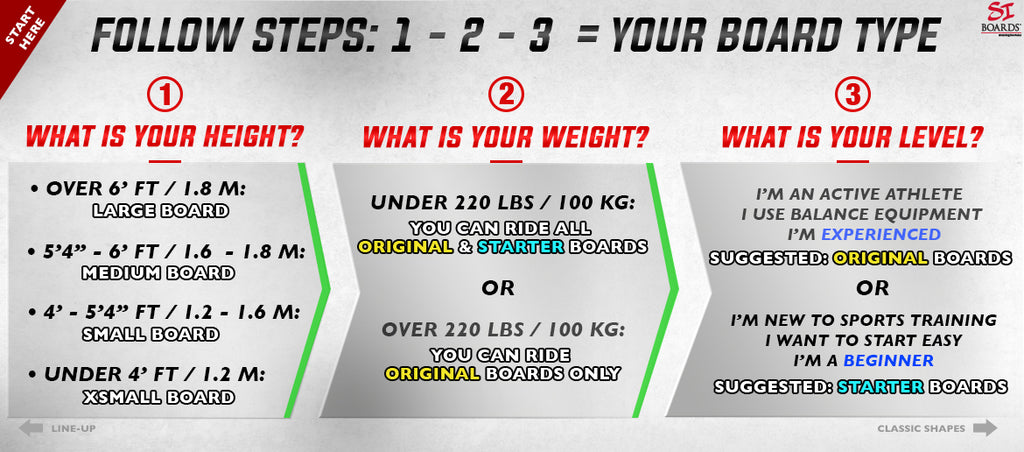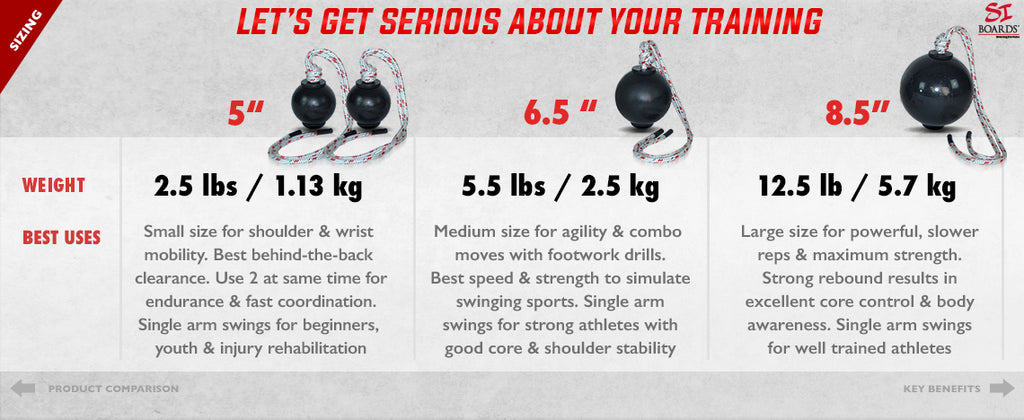Size Chart
Balance Boards







Medicine Balls


Half Balls


Rope Balls

Speed And Strength:
6.5" Medium Rope Ball is perfect for swinging sport athletes who want to simulate fast sport movements. Make an impact on every rep as you muscle this weight around and then quickly wind up and re-strike. A perfect weight for engaging all muscles in constant reps to build strength and endurance.
Feet Of Fury:
Don't just stand there, make a move in the right direction. Add a hop into your swing and then get ready to react to the superb rebound. Simulate agility sports on the move that need rotational power like hockey, tennis, lacrosse and martial arts. Quickly get back to the ready position and develop change of direction control.
Let Your Abs Be Heard:
You'll find it easy to keep the momentum going by adding your powerful stroke to figure 8's, softball pitches, SUP paddle and independent hand overhead rotations. Keeping your balance requires constant abdominal control and spinal stability. Swinging overhead stretches your abs and the resulting control sets your abs on fire.
Elysia's Notes:
My absolutely favorite size and weight for sequence moves. I love combining an overhead swing, slam, rebound and reverse pivot and swing and slam again ambidextrously. The momentum carries beautifully and lets me fine tune my footwork. Single arm shoulder patterns like the backhand and forehand are great, especially when combined with agility moves and pivots. You can keep slamming for endurance and power if you have have that small rest period between moves.
Diameter:
Weight:
Circumference:
Rope Length:
Comparison Ball Sizes:
Ball Material:
Top Rope Cap Material:
Rope Material:
Suggested Use:
How It Feels To Swing Around The Body:
How It Feels To Slam Against The Wall:
How It Feels To Slam Against The Ground:
Not Recommended:
Getting The Most of Our Superior Rebound:
Our Power Rope Balls rebound unlike any other and creates tremendous reaction energy. The harder you slam against the wall the greater the fast rebound and eccentric muscle control with shoulder stability needed. To properly bounce against the wall you need full range of motion and to get your hand inches from the wall. Limited range prevents the middle of the ball from hitting the wall and a direct opposite rebound vs hitting the top of the ball.
Get The Right Rope Length For Your Needs and Skill Level:
The longer the rope the farther the weight is from your body. This creates greater force on your joints and can be difficult to control for beginners. A shorter rope may be a better starting point for beginners and those learning shoulder control. Longer ropes give you the ability to slam the Rope Balls on the ground and have more body clearance on the rebound.
How To Measure:
A general rule is to have the rope end at the inside of your elbow crease. This allows you to have ground clearance if doing big shoulder swings. You will have enough rope length for extra grip knots and hand wraps. Measure from the ground to the inside of your elbow. Advanced users may want a longer rope for added hand wraps or behind the back swings.
User Height Suggestions:
Length Rope Lengths:
How To Remove Your Old Rope and Rope Cap:
How To Assemble Your Rope Ball:
Download our Instruction Manuals click here
See more Power Rope Ball training videos click here
Learn the details of All Si Boards Power Rope Balls click here
Power Rope Ball Instructions click here
Power Rope Ball Precautions and Care click here
Compare the Tech Specs of all Si Boards Power Rope Balls click here
Shop all Power Ball Products click here
Be the first to ask a question about this.











